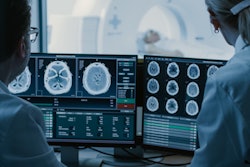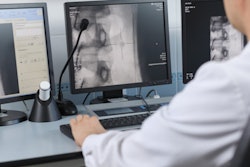
Radiology departments have already shifted the way staff work and how imaging is performed to cope with the COVID-19 pandemic. But they also need to consider how to deal with its aftermath, when nonurgent exams that have been canceled need to be performed, according to an opinion published April 21 in the Journal of the American College of Radiology.
The backlog of imaging exams that have been put off amid the COVID-19 pandemic will be the "crisis after the crisis," wrote a team led by Dr. Thomas Kwee, PhD, of University Medical Center Groningen in the Netherlands.
"Although there is literature on how to prepare a radiology department for operation during the COVID-19 crisis, the postcrisis situation has not yet been addressed," the group wrote.
Hospitals have suspended elective, nonurgent care in an effort to reduce the spread of the SARS-CoV-2 virus among patients and healthcare workers, and to make more beds available to patients ill with COVID-19.
"There is reluctance to continue providing nonurgent elective radiologic services to [patients]," the group wrote. "Consequently, it is inevitable that a large reservoir of radiologic procedures will accumulate."
Kwee and colleagues suggested three ways to cope with imaging backlog when COVID-19 restrictions lift:
- Use abbreviated MRI protocols. "MRI represents a large proportion of the total volume of procedures in our department, and is relatively time-consuming," the group wrote. "Therefore, current MRI protocols will be replaced with abbreviated MRI protocols when possible."
- Redistribute the workload. Some radiology subspecialties will experience higher peak workloads once nonurgent imaging exams resume, so the team's department is reassigning its staff to those subspecialties, such as x-ray, chest CT, oncologic CT, and abdominal ultrasound. "Based on the registration of radiologic procedures that have been canceled since the COVID-19 outbreak ... subspecialty sections have been identified that are vulnerable to work overloads. Subsequently, radiologists with other subspecializations have been distributed among these vulnerable sections on a voluntary basis."
- Manage medical students. At University Medical Center Groningen, medical students are involved in radiologic procedures and are supervised by attending or resident radiologists. To prepare for a postcrisis imaging procedure surge, these radiologists will develop self-educational material that students can use until the workload balances again.
Now is the time for radiology to consider how to prepare for further stress on its departments, according to the authors.
"Although some of these solutions may not be applicable to other institutions, some of them may, and [we hope] that this communication will create awareness and stimulate discussions on how to prepare a radiology department for the crisis after the currently ongoing COVID-19 crisis," they concluded.





















